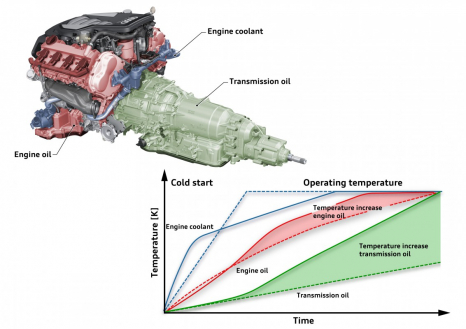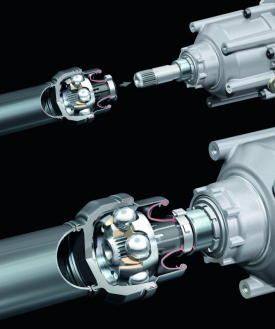Efficiency in transmissions
The manual and automatic transmissions from Audi are highly efficient. Irrespective of design, they have all been optimized with regard to internal friction and are notable for their wide gear-ratio spread.
The term “transmission spacing” refers to the transmission’s gear-ratio range, that is, the ratio between the smallest (“closest”) and the largest (“widest”) gear. A wide gear-ratio spread allows for both sporty sprints in the lower gears and low revs at high speeds on the highway. The wider gear ratios in the top gears harmonize perfectly with the modern TDI, FSI and TFSI engines from Audi, which already provide hefty pulling power in the low rev range. This “downspeeding” results directly in lower fuel consumption.
In many Audi models, the transmission is integrated into the innovative thermal management system. Once the engine has heated enough coolant, a valve in the loop opens and the hot water flows on to the transmission-oil cooler – in turn decreasing friction losses due to cold oil. Almost all Audi transmission types are able to cooperate with the start-stop system – yet another way in which they add to the efficiency equation.
The multitronic, the seven-speed S tronic and the eight-speed tiptronic can also access route data from the navigation system. They thus incorporate upcoming curves in their gearshift strategy to avoid unnecessary gear changes on winding roads, for example.
For the propeller shaft, which directs power to the rear axle, Audi takes a systematic approach to lightweight design in many cases. In models such as the A8, the propeller shaft connects to the center differential by latching into a clamp connection. This solution delivers a weight saving of 1.3 kilograms (2.87 lb) vis-à-vis a traditional bolted flange coupling.
Status: 2011

